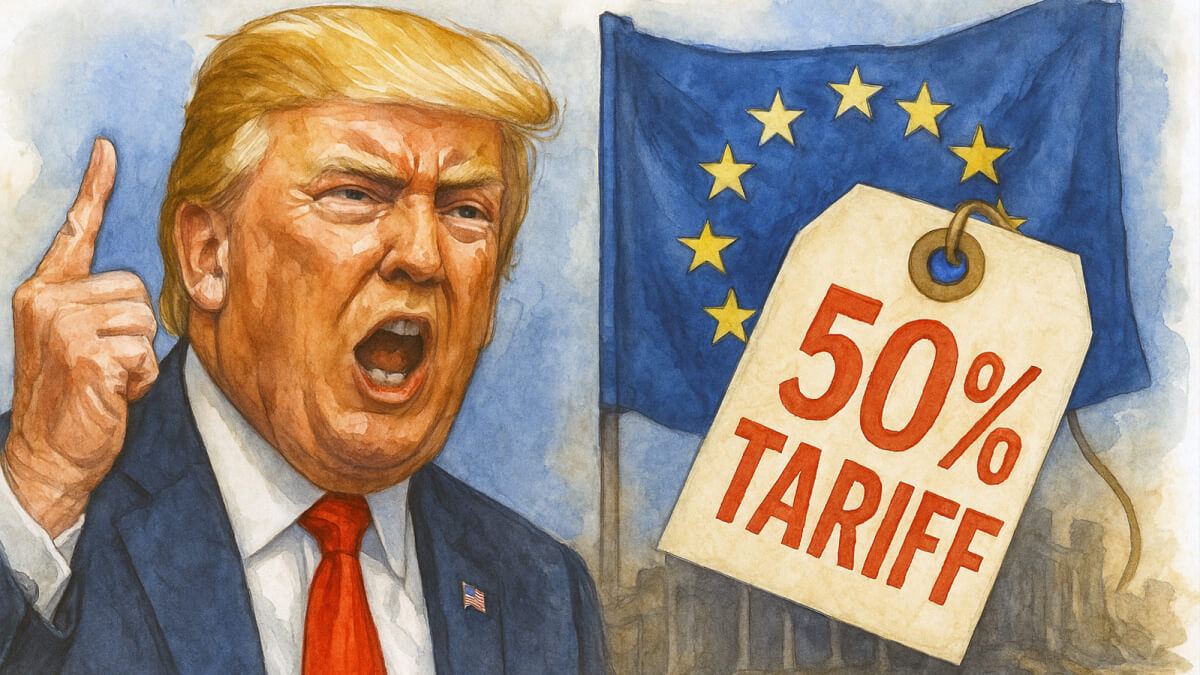President Donald Trump intensified trade tensions on Friday by announcing a potential 50% tariff on all European Union (EU) products starting next month if the current impasse in trade negotiations persists. The startling declaration was aimed at Brussels, signaling frustration after more than a month of unproductive talks.
Speaking from the Oval Office, Trump conveyed a stark message: the EU must correct its trade practices or face severe consequences. This aggressive tactic, referred to by a White House source as "FAFO" (f*ck around and find out), underlines the administration's readiness to escalate the situation to secure a more favorable trade outcome.
Financial markets reacted quickly to the news, with significant drops observed in the Dow Jones, Nasdaq, and S&P 500 indices ahead of the Memorial Day weekend. Such a move by the U.S. government could significantly affect the EU's top exports to the U.S., which include cars, pharmaceuticals, machinery, electronics, wine, and agricultural products.
In response, European Commission Vice President Maros Sefcovic confirmed an upcoming discussion with U.S. trade officials, asserting the EU's preparedness to engage constructively. However, he emphasized the expectation of "mutual respect, not threats" and vowed that the EU would "defend our interests."
European Parliament Vice President Martin Hojsik decried the tariff threat as "blackmail" and called for a swift and proportional response from the EU, as reported by the New York Post.
Amidst the building trade row, Trump took to Truth Social to justify his stance, accusing the EU of exploiting the U.S. in trade by pointing to trade barriers, VAT taxes, lawsuits, and currency manipulation that contribute to a $250 billion trade deficit with the bloc. He also highlighted the lack of awareness among some EU member states regarding Brussels' negotiating positions.
The administration paused its "Liberation Day" tariff package for 90 days starting April 9, providing a window for individual countries to negotiate separate deals. The United Kingdom has already secured an arrangement, maintaining a 10% tariff but allowing greater access for U.S. agricultural products. Trump's administration has indicated that no country will receive a rate lower than 10%, positioning the UK's agreement as a potential model for other nations.
The trade conflict with China, previously marked by tariffs as high as 145%, has seen tensions ease this month following negotiations in Switzerland, leading to a reduced tariff rate of 30%.
When asked about the objectives behind the proposed EU tariffs, Trump suggested that the measure would incentivize European companies to invest in the United States and build factories domestically. He cited an anticipated $12 trillion investment figure as evidence of his policy's potential success.
The President's strategy reflects a broader trade policy approach that prioritizes American economic interests and seeks to redress what his administration perceives as imbalances in global trade relations. With the tariff clock ticking, the international community watches closely as the potential for a new trade war looms on the horizon.





